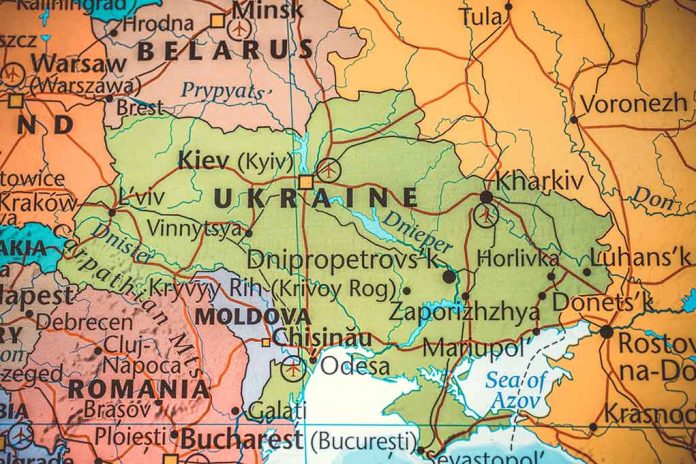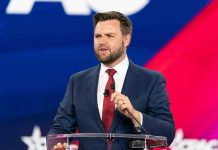
Defense Secretary Pete Hegseth abruptly halted critical Ukraine aid flights without President Trump’s knowledge, sparking internal chaos and raising serious questions about who is truly directing America’s defense policy.
Key Takeaways
- Defense Secretary Pete Hegseth canceled 11 military aid flights to Ukraine carrying artillery and shells without President Trump’s direct order, causing confusion among national security officials.
- The unilateral decision reflects the growing pro-isolationist influence within the administration, particularly aligned with Vice President JD Vance’s foreign policy views.
- The aid flights eventually resumed after intervention from the then-national security adviser Mike Waltz, highlighting internal policy disagreements.
- The White House has defended Hegseth and downplayed communication failures, emphasizing progress toward ending the Russia-Ukraine conflict.
- The incident reveals the Trump administration’s approach to governance: “move fast, break things, and sort it out later.”
Hegseth’s Unilateral Decision Stuns Administration Officials
In a move that caught even the White House off guard, Defense Secretary Pete Hegseth issued a verbal order to halt 11 military aid flights destined for Ukraine. The flights, loaded with critical artillery, shells, and other weapons that had been authorized under previous funding agreements, were stopped without President Trump’s explicit direction. This decision, recorded in TRANSCOM records as coming directly from “SECDEF,” created immediate confusion throughout Washington’s defense and diplomatic circles, with senior officials scrambling to understand who had authorized such a significant policy shift.
The timeline reveals that Hegseth’s decision came after a January 30 Oval Office meeting, though sources confirm President Trump did not explicitly direct this particular aid freeze. National security officials across the White House, Pentagon, and State Department were left in disarray, with many learning about the canceled flights only after the fact. The situation became so concerning that then-national security adviser Mike Waltz had to intervene to restart the shipments, underscoring the lack of coordination on critical defense matters.
Hegseth’s order to halt arms aid to Ukraine caused confusion at the White House. Reuters reported that Trump had not issued any directive to halt aid to Ukraine.
Just a week after Donald Trump took office for a second time as president of the United States, the military received… pic.twitter.com/uODxTf647U
— Uncensored News (@uncensorednews9) May 7, 2025
Isolationist Influence Grows in Trump’s Defense Policy 2025
Hegseth’s dramatic move aligns with the increasingly influential isolationist wing of the administration, championed by Vice President JD Vance. This faction has consistently pushed for reducing America’s involvement in foreign conflicts, particularly the Russia-Ukraine war, favoring America-first policies over continued international commitments. The aid cancellation signals a potential major shift in U.S. foreign policy that prioritizes disengagement from European security concerns, despite decades of bipartisan commitment to NATO allies and European stability.
“This is consistent with the administration’s policy to move fast, break things, and sort it out later,” said retired Marine and defense expert Mark Cancian, commenting on the administration’s approach to governance.
The Pentagon under Hegseth’s leadership has experienced what insiders describe as “total chaos,” with mass firings and leaked discussions of potential military actions. Critics have called for Hegseth’s resignation, with reports suggesting potential replacements are already being considered. Despite these challenges, President Trump has publicly backed his Defense Secretary, stating he has no intention of replacing him “not even a little bit,” reinforcing his confidence in Hegseth’s leadership despite the communication breakdown.
White House Defense and Path Forward
The White House has downplayed the significance of the communication failure while standing firmly behind Hegseth. A formal order officially halting aid previously authorized under President Biden’s administration was eventually enacted on March 4, suggesting the administration ultimately embraced Hegseth’s initial impulse despite the procedural irregularities. The incident has raised serious concerns in Ukraine, with officials there struggling to get clear answers from the Trump administration about future support commitments.
“Negotiating an end to the Russia-Ukraine War has been a complex and fluid situation. We are not going to detail every conversation among top administration officials throughout the process. The bottom line is the war is much closer to an end today than it was when President Trump took office,” said White House Press Secretary Karoline Leavitt.
Despite criticism, the administration maintains that its ultimate goal remains ending the Russia-Ukraine conflict through diplomatic means rather than endless military support. This position resonates strongly with Trump’s base, who have grown increasingly frustrated with billions in foreign aid while facing economic challenges at home. For many conservative supporters, Hegseth’s actions, while procedurally questionable, align with their desire to prioritize American interests first and extricate the country from costly foreign entanglements.



